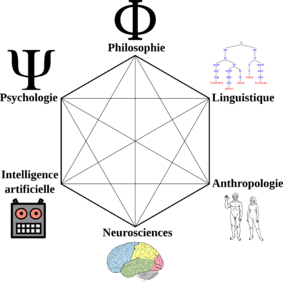Interfacing the machine to the human
DISCOVER WHAT ARE HUMAN-MACHINE INTERFACES
How humans interact with machines (computer, smartphone, etc.)? How to design effective, efficient and satisfying systems for their users? Here are the questions that arise in this particular area that is the HMI, and which is interested in the design of systems, as its name suggests, at the interface between humans and machines …
VIDEO TEXTUAL TRANSCRIPTION
VIDEO TEXTUAL TRANSCRIPTION
GLOSSARY
(the majority of definitions are taken from Wikipedia)
Human Machine Interface (HMI): all the means implemented for a human to interact with a machine. By extension, the HMI is also the research area that designs systems and studies the interactions between humans and machines. Cognitive science: all disciplines that study the mechanisms of knowledg

- Ergonomics: a discipline that seeks to understand the interactions between human beings and the components of a system. Human factors are taken into account in designing and evaluating tasks to make them compatible with the needs and capabilities of users.
- Design: creation, design of a product or system.
- Usability: according to ISO 9241-11, this is the « degree to which a product can be used, by identified users, to achieve defined goals effectively, efficiently and satisfactorily, in a specified usage context » . Usability has several criteria: effectiveness, efficiency and satisfaction.
- Effectiveness: achievement of the expected result.
- Efficiency: achievement of the result with the least effort or the minimum time.
- Satisfaction: subjective evaluation of the interaction by the user.
- Linguistics: a discipline that studies the language and functioning of languages in a descriptive approach.
- Cognitive psychology: a branch of psychology that focuses specifically on the cognitive functioning of the human being (language, memory, perception, concentration, etc.). Cognition (from Latin « cognito » for the action of knowing) is the set of mental activities and processes that relate to knowledge.
- Interative design: design that is done by repeated cycles. Each cycle makes it possible to test, adapt and improve the product.
- Accessibility: term originally derived from the world of disability and extended to all citizens to designate the facilitation of access in different areas. In computer science, we speak of accessibility to designate the adaptation of digital systems and the development of specific tools in the case of disabilities.
- Ubiquitous Systems: Ubiquity or ubiquity is the ability to be present in any place or place at the same time. In computing, this refers to environments in which computers and networks are integrated into the real world, and in which the user is permanently connected. See ubiquitous computing
ABOUT THE AUTOR
Anke Brock is a research fellow on the Potioc project team at the Inria Bordeaux – Sud-Ouest research center. Born in Germany, she worked for 5 years in a research and development department in the automotive industry before joining France. At Inria, she works in the field of human-machine interaction, and is now working on the development of her own research project: interaction with maps.